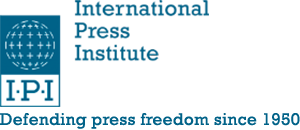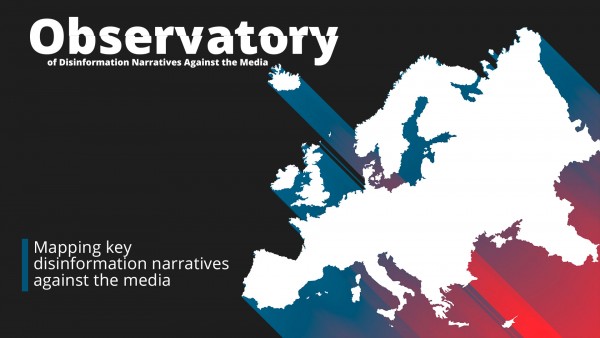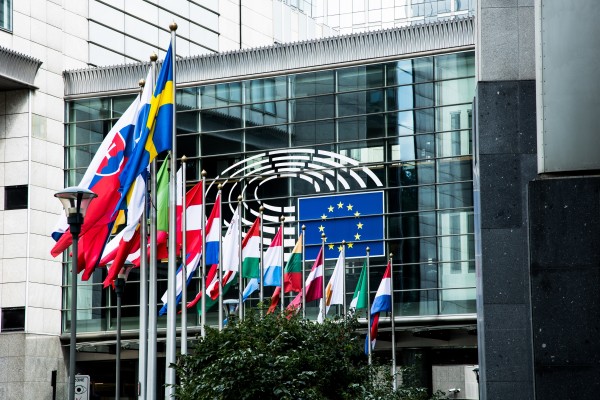
Media Freedom Rapid Response (MFRR) partners raise further concerns about continued violence against journalists covering protests and demonstrations across European Union (EU) Member States and Candidates in 2020 and call for increased protection, police training and oversight, as well as broader respect for media freedom.
In the first six months of the year, MFRR partners have documented over 31 separate cases of attacks and media freedom violations against at least 41 different journalists and media workers reporting from protests and demonstrations in 11 EU Member States and Candidate Countries.
The figures, documented on the Mapping Media Freedom platform, illustrate the increasing threats posed to journalist’s safety and media freedom by heavy handed police and security forces, extremist political groups and violent members of the public.
Ten of the incidents resulted in serious injuries which required journalists to be hospitalised or receive emergency medical assistance. Four incidents resulted in arrests by police.
While many of the violations documented in 2020 were linked to the COVID-19 pandemic, media professionals and press workers also faced threats while documenting far-right rallies, Black Lives Matter demonstrations and protests about sensitive topics such as the European migrant crisis.
In light of the continued attacks, the undersigned organisations call on European institutions and national authorities to guarantee the safety and protection of media professionals during demonstrations and protests and to ensure all reported violations are thoroughly investigated.
MFRR partners also already set out a list of recommendations for national authorities and police officers, journalists, media workers and media outlets and protest or demonstration organisers [see below].
COVID-19 lockdown protests
During the coronavirus pandemic, journalists reporting from the scene of anti-lockdown or anti-government protests have faced pressures from both protesters and police.
- Italy – On 24 March, a photojournalist working for Italian daily newspaper, La Stampa was threatened and had his SD card stolen by a crowd of people while documenting a protest in Turin.
- Germany – On 6 May, a camera team from the German public service broadcaster, ARD was attacked and kicked by a protester while covering a demonstration against COVID-19 restrictions outside the Reichstag.
- Poland – On 8 May, Pawel Rutkiewicz, a reporter for Gazeta Wyborcza in the Polish capital Warsaw, was arrested by police while covering an anti-lockdown demonstration.
- Germany – On 15 May, a camera team from public service broadcaster, ZDF was verbally attacked and harassed in Halle in connection with a demonstration against the COVID-19 lockdown measures.
- On other occasions, journalists in Poland have received fines for covering anti-lockdown protests or, as in Slovenia, have faced calls for prosecution from leading government ministers for documenting events.
Black Lives Matter (BLM) protests
As lockdowns lifted and restrictions began to ease, several European cities saw demonstrations and counter demonstrations linked to the global anti-racism movement Black Lives Matter (BLM).
- United Kingdom – On 3 June, two Australian journalists were attacked live on air while covering protests in London. Sophie Walsh, one of Nine News’s Europe correspondents, was live on air in Hyde Park when a man yelled “Allahu Akhbar” and made stabbing motions before grabbing her.
- Belgium – On 7 June, journalist Jeremy Audouard was shoved and intimidated by a police officer as he was attempting to film an arrest in the Belgian capital Brussels, on the fringe of a BLM demonstration.
Far-right rallies
- Germany – On 9 May, a WDR TV reporter in the German city of Dortmund was injured after being attacked by a man allegedly known to police as a member of an extreme right-wing group after a demonstration.
- France – On 17 May, freelance journalist for Agence France Presse (AFP), Ysis Pecq, was bullied and physically intimidated by protestors as she covered a demonstration in Montpellier, France, organised by a right-wing extremist group, La Ligue du Midi.
- Spain – On 23 May, a Spanish photojournalist for Spanish daily newspaper La Razon was threatened and physically attacked as he covered a demonstration in Madrid organised by far-right party, Vox.
- Italy – On 6 June, members of far-right groups were behind violent attacks on TV crews in Rome, when protesters demonstrating the government’s handling of COVID-19 began chanting slogans comparing journalists to “terrorists” and then launching rocks, bottles and firecrackers against the TV crews. This led to the injury of one video-maker.
- United Kingdom – On 13 June, several journalists in the UK were attacked and threatened while covering a far-right rally in London, during which Italian journalist and photographer, Corrado Amitrano had his nose broken, another photographer was hit as protestors hurled barricades at the police, and three reporters had their mobile phones knocked out of their hands.
- United Kingdom – On 17 June, whilst he was covering a far-right rally in Leeds, Yorkshire Live reporter Ben Abbiss was doused in beer and threatened by a group of counter-demonstrators opposing a BLM protest.
Anti-migrant protests in Greece
- On 19 January, German correspondent Thomas Jacobi of Deutsche Welle was violently attacked by a group of right-wing extremists during a protest in the capital Athens.
- On 1 March, German journalist Giorgos Christides of Der Spiegel was harassed and faced intimidation by angry local protesters as he covered the arrival of migrants at the port of Thermi on the island of Lesbos.
- The same day, German photojournalist Michael Trammer was also attacked and injured by local protesters on Lesbos as he tried to document similar events.
Other protests and demonstrations
- Germany – On 4 January, journalist Björn Stritzel was attacked during a demonstration in front of the US Embassy in Berlin, Germany.
- Germany – On 1 May, a freelance television media worker was punched in the face by a police officer as she was helping document annual May Day protests in Berlin, knocking out two of her teeth.
- Germany – The same day, a five-person camera team from the German public service broadcaster, ZDF was attacked by approximately 15 people while covering a demonstration in Berlin. Five journalists were injured, four of them were hospitalised.
- Montenegro – On 13 May, Montenegrin journalist Veliša Kadić, a correspondent for Večernje Novosti, was detained by police while covering protests in the city of Nikšić in response to the arrest of a priest from the Serbian Orthodox Church.
- Albania – On 17 May, police in the Albanian capital Tirana roughly arrested journalist Alfred Lela, editor of Politiko.al, during anti-government protests over a decision to bulldoze the country’s National Theatre.
- France – On 15 June, three journalists working for France 3 Bourgogne were violently attacked by a group of 15 people in the city of Dijon while preparing a live broadcast on protests about the assault on a local teenager. The crew managed to escape with two of its members slightly injured by broken glass.
- France – On 16 June, freelance journalist Stephanie Roy was injured by a grenade fired at her legs by police as she was filming a healthcare workers’ demonstration in Paris.
- France – On 26 June, journalist Alexandre Reza Kokabi was arrested while he was covering an event organised by the environmental protest group, Extinction Rebellion at Orly Airport in Paris.
- Austria – On 27 June, Kurdish journalist Nurettin Civandag was taken to hospital with injuries to his head and teeth after being attacked by a group of several people after documenting a demonstration by pro-Kurdish groups in Vienna. Civandag said his attackers were suspected Turkish youths. It is not yet clear which group the suspects belong to.
Journalist’s safety: a central pillar of media freedom
As MFRR partners previously highlighted, these attacks against journalists and media workers at protests have come from a number of sources, including participants of the protests, activist groups or police officers deployed to maintain public safety.
Police across Europe continue to deploy increasingly militarised tactics when responding to protest movements, including the use of non-fatal firearms, tear gas and aggressive crowd dispersal tactics. In many cases, even when journalists and media workers are clearly identified, they have been attacked as part of the police’s response to the protest in general.
The right to free assembly and association is a vital underpinning of a modern and pluralist democracy and has itself come under significant threat across Europe. However, threats against the press and media further weakens their ability to cover demonstrations and to inform the public accordingly.
When media workers are attacked, threatened or unlawfully detained, full, independent and robust investigations are vital to ensure that journalists and media workers are able to continue working, others are not threatened into silence and the public can be informed about the public movements or protests demanding change, both in their native country and across Europe.
Recommendations for national authorities and police officers:
- Ensure proportionate and lawful responses to protests and demonstrations that are inline with all national laws, human rights standards and international norms.
- Establish robust and independent mechanisms to investigate attacks on journalists and media workers by state officials including police officers.
- Deliver training for police officers on proportionate and lawful responses to demonstrations and protests, with a focus on protecting journalists and media workers. Training should be offered to all officers and on a regular basis to ensure best practice is shared across all officers.
- Require police officers to systematically record criminal offenses against the media and draw up a regular situation report that is accessible by other journalists and media workers, public watchdogs, unions and European institutions.
- Embed protections for journalists and media workers in the state planning of and response to all protests and demonstrations.
- Develop cooperation schemes with journalists and media organisations and prioritise investigating threats against journalists.
Recommendations for journalists, media workers and media outlets:
- All media outlets should ensure all journalists and media workers are regularly trained and offered necessary security, legal and practical support to safely cover protests and demonstrations. In certain circumstances, this may require personal protection and other measures.
- Ensure all journalists and media workers are prominently identified as such when reporting on sensitive situations such as protests and demonstrations.
- Respond responsibly and flexibly to the ever-changing situation at protests and demonstrations to ensure safety and security can be guaranteed.
- Ensure risk assessment and safety procedures are followed before the assignment.
Recommendations for protest or demonstration organisers:
- Ensure journalists and media workers are protected in the build up, during and following any protest and demonstration. There should be a zero-tolerance approach to threats made by protest attendees and organisers against journalists and media workers.
- Guarantee that all threats, violations and attacks against journalists and media workers are responded to in a robust, transparent and proportionate manner. Where possible engage with the victim to identify the most suitable response, which may include making a complaint to the police. This should also be coupled with a public condemnation from the protest or demonstration organisers to isolate the perpetrators.
- Establish locations and processes for the protest or demonstration to ensure journalists and media workers can report safely and securely.
- Ensure all observers, marshals and security staff are adequately briefed in regard to the protection of journalists and media workers.
Signed by:
European Centre for Press and Media Freedom (ECPMF)
Article 19
European Federation of Journalists (EFJ)
Free Press Unlimited (FPU)
International Press Institute (IPI)
Osservatorio Balcani e Caucaso Transeuropa (OBCT)
This statement was prepared by the International Press Institute (IPI) as part of the Media Freedom Rapid Response (MFRR), a Europe-wide mechanism, which tracks, monitors and responds to violations of press and media freedom in EU Member States and Candidate Countries. This project provides legal and practical support, public advocacy and information to protect journalists and media workers. The MFRR is organised by an consortium led by the European Centre for Press and Media Freedom (ECPMF) including ARTICLE 19, the European Federation of Journalists (EFJ), Free Press Unlimited (FPU), the Institute for Applied Informatics at the University of Leipzig (InfAI), International Press Institute (IPI) and CCI/Osservatorio Balcani e Caucaso Transeuropa (OBCT). The project is co-funded by the European Commission.




